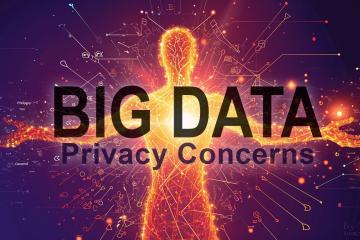Compliance in cybersecurity means following rules and standards for protecting sensitive information. It helps keep data safe and secure.
It's important because it:
- Protects data and systems from cyber threats
- Keeps customers and partners happy
- Helps avoid fines and legal trouble
- Shows that the organization takes security seriously
Compliance standards give organizations a guide for good security practices.
Key Concepts
Definition
Cybersecurity compliance is meeting the security requirements set by laws and industry standards. It means putting controls in place to protect data and systems from unauthorized access or damage.
Purpose
The purpose of compliance is to make sure organizations follow established security practices to protect sensitive information. Compliance helps organizations:
- Keep customer data safe and maintain trust
- Protect business secrets and intellectual property
- Avoid penalties for not following rules
- Keep important systems and data working properly
- Show that they care about information security and privacy
Relevance
Compliance is a key part of cybersecurity because it helps organizations manage security risks. By following compliance standards, organizations can:
- Find and fix security weaknesses
- Put appropriate security controls in place
- Regularly check and improve their security
- Show that they are doing their best to protect data
- Meet the expectations of customers, partners, and regulators
Other Terms
Compliance is also known as:
- Information security compliance
- Data protection compliance
- Regulatory compliance in cybersecurity
- Cybersecurity regulatory compliance
- Information technology compliance
- IT Compliance
- Data privacy compliance
Types of Compliance
There are different types of compliance standards that organizations must follow, depending on their industry and the types of data they handle. Some common ones are:
- GDPR: A European Union rule for collecting and using personal information.
- HIPAA: A U.S. law for protecting patient health information.
- PCI DSS: Standards for companies that handle credit card information.
- SOC 2: A standard for service organizations to show they manage data securely.
- NIST Cybersecurity Framework: Guidelines for managing cybersecurity risk.
- ISO/IEC 27001: An international standard for information security management.
Examples
- A healthcare provider following HIPAA rules to protect patient data, like encrypting health records and doing risk assessments.
- An online store following PCI DSS standards by using secure payment systems and updating their systems regularly.
- A cloud service provider getting SOC 2 compliance to show they keep customer data safe and their systems running smoothly.
- An organization using the NIST Cybersecurity Framework to guide their cybersecurity practices.
Importance in Cybersecurity
Compliance is vital in cybersecurity because it sets a baseline for security practices and makes sure organizations prioritize data protection.
Security Risks
Not following cybersecurity standards can expose organizations to risks like:
- Data breaches and unauthorized access to sensitive information
- Damage to reputation and loss of customer trust
- Fines and legal trouble for not protecting data properly
- Disruption of business operations due to security incidents
- Loss of business secrets and competitive advantage
Risk Reduction Strategies
To reduce the risks of non-compliance, organizations can:
- Regularly check their compliance status and find gaps in their security
- Put strong security measures in place, like encryption and access controls
- Provide regular security training to employees
- Do audits and testing to make sure security controls are working
- Make and test plans for responding to security incidents
Best Practices
Some best practices for staying compliant include:
- Having a compliance officer or team to oversee compliance efforts
- Making and regularly updating security policies and procedures
- Doing regular risk assessments and scans for weaknesses
- Putting strong access controls and authentication in place
- Encrypting sensitive data both when stored and sent
- Regularly monitoring systems for suspicious activity and quickly fixing security incidents
- Checking that third-party vendors meet compliance standards
- Keeping detailed records of compliance efforts and security incidents
Related Terms
- Risk assessment: Identifying and evaluating potential security risks to an organization's assets and data.
- Security controls: Safeguards put in place to protect the confidentiality, integrity, and availability of information systems and data.
- Data privacy: Protecting personal information from unauthorized access, use, or disclosure.
- Vulnerability: A weakness in a system that could be exploited by an attacker.
- Penetration testing: Testing a system to find vulnerabilities that an attacker could exploit.
- Incident response: The process of detecting, analyzing, containing, and recovering from a security incident or data breach.
Tips for Effective Compliance Management
- Stay up to date on the latest compliance requirements and industry standards.
- Develop a comprehensive compliance program with policies, procedures, and regular training.
- Do regular risk assessments to find and fix potential vulnerabilities.
- Use strong access controls, like multi-factor authentication and role-based access.
- Regularly monitor systems for suspicious activity and quickly investigate and fix any security incidents.
- Promote a culture of compliance in your organization, emphasizing the importance of data protection and security best practices.
- Work with third-party vendors and partners to ensure they also follow relevant compliance standards.
- Regularly review and update your compliance program to keep it effective and aligned with changing requirements and industry standards.
- Use automated compliance management tools to streamline processes and reduce the risk of human error.
- Do regular compliance audits and assessments to find areas for improvement and show due diligence to regulators and stakeholders.
By making compliance a priority in cybersecurity, organizations can better protect their sensitive data, maintain customer trust, and avoid costly legal and financial consequences. Investing in a strong compliance program is essential for navigating the complex cybersecurity landscape and ensuring long-term success.



